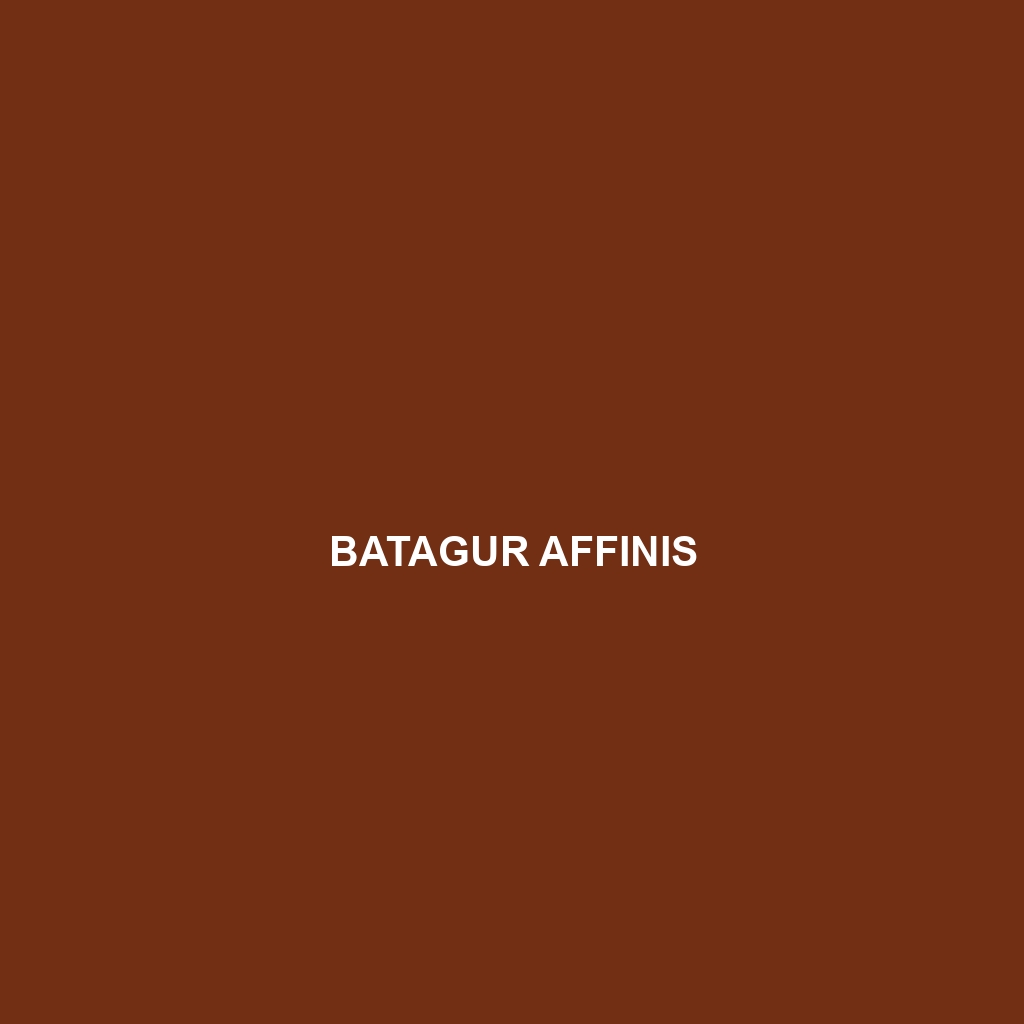Species Description: Batagur affinis
Common Name: Batagur affinis
Scientific Name: Batagur affinis
Habitat
Batagur affinis, commonly known as the Reevus turtle, primarily inhabits the freshwater environments of Southeast Asia. Its geographic distribution includes the river systems and coastal areas of countries such as India, Bangladesh, Myanmar, and Thailand. These turtles are typically found in rivers, estuaries, and mangrove swamps, where they thrive in warm, shallow waters rich in vegetation.
Physical Characteristics
Batagur affinis exhibits a robust shell that can reach lengths of up to 70 cm (27 inches). Its carapace is typically dark brown or olive green with distinctive yellow or cream-coloured patterns, aiding in camouflage within its natural habitat. The tortoise’s head is relatively large with a pointed snout, and it possesses webbed feet, adapted for swimming in aquatic environments. Adult individuals often show sexual dimorphism, with males having brighter coloration during the breeding season.
Behavior
This species is primarily diurnal and exhibits both aquatic and semi-aquatic behaviors. Batagur affinis is known for its strong swimming abilities and often bask under the sun on riverbanks. During the mating season, males display courtship behaviors that include head bobbing and chasing females. Additionally, these turtles are known to nest in sandy areas along riverbanks, where they dig nests to lay their eggs.
Diet
Batagur affinis is predominantly herbivorous, feeding on a variety of aquatic and terrestrial plants. Its diet includes water hyacinth, algae, fruits, and leaves. The turtle is also known to consume small invertebrates, which can supplement its nutritional needs. Understanding the feeding habits of Batagur affinis highlights its role as a critical herbivore in maintaining the health of aquatic ecosystems.
Reproduction
The breeding season for Batagur affinis typically occurs during the rainy months, where females emerge from the water to lay their eggs in sandy nests. A female can lay up to 20 to 30 eggs per nesting season. After an incubation period of about 60 to 70 days, hatchlings emerge and make their way to the water. Parental care is absent; however, the presence of natural habitats is essential for the survival of the young turtles.
Conservation Status
Batagur affinis is currently listed as critically endangered on the IUCN Red List due to habitat loss, poaching, and the impact of pollution. Conservation efforts are vital for protecting this species and its natural habitats, which are increasingly threatened by human activity and climate change.
Interesting Facts
One fascinating aspect of Batagur affinis is its ability to migrate long distances between freshwater and brackish habitats during its life cycle. Additionally, this species is known for its unique nesting behavior, often choosing nesting sites that are not easily accessible to predators, showcasing its instinctual survival adaptations.
Role in Ecosystem
Batagur affinis plays a significant role in its ecosystem as a herbivore, facilitating the growth of aquatic vegetation and contributing to nutrient cycling within freshwater systems. By consuming and dispersing seeds from the plants it feeds on, the turtle helps to maintain biodiversity and supports the health of its aquatic environment.
